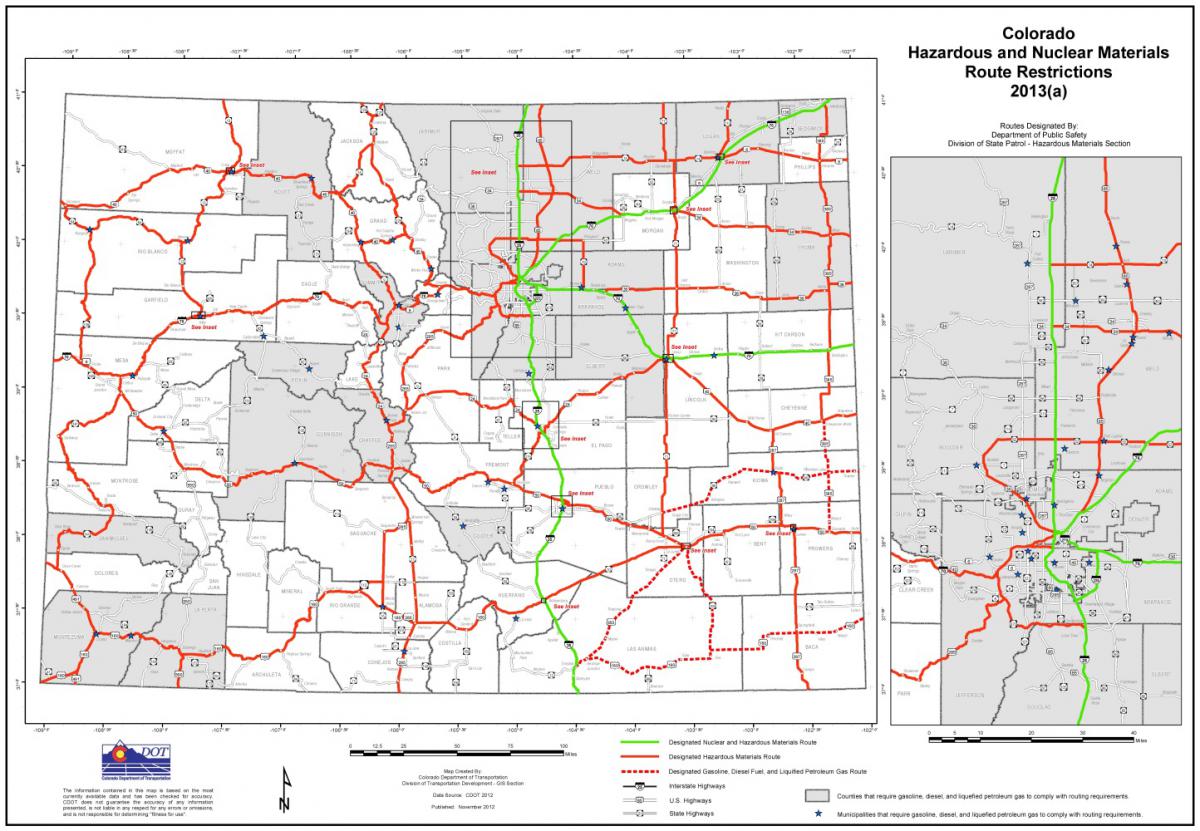Table of Contents
A hazardous material (HAZMAT) is any element or compound that, because of handling, storing, processing, or packaging, may have detrimental effects upon the public (especially emergency personnel) and/or the environment (State Emergency Operations Plan, 2015, p. Tab A-6 to Tab A-7). Hazardous materials are found in forms and quantities that can potentially cause death, serious injury, long-lasting health effects, and property damage in varying degrees. They may be flammable, corrosive, detonable, toxic, radioactive, oxidizers, disease-causing agents, or highly reactive. They are routinely used and stored in homes and businesses and are also shipped daily on Colorado’s highways, railroads, waterways, and pipelines. Hazardous material releases include spilling, disposal, or other form of discharge into the environment.
Hazardous materials used in agriculture, industry, and in the home pose a daily hazard to people and the environment. Coloradans are vulnerable to the adverse effects of accidental leakage of hazardous materials or a deliberate act using these materials. According to the State Emergency Operations Plan, statewide there are approximately 5,800 fixed facilities where reportable concentrations of hazardous materials are used and/or stored, and the oil and gas production industry accounts for approximately 4,200 of those facilities. Between 2010 and 2012, the Colorado Department of Public Health and Environment (CDPHE) recorded 2,718 reported spills or releases. More than one-third of those were at fixed facilities, with the remainder associated with mobile HAZMATs. The steady growth in the use of chemicals has resulted in an increased need to transport these materials, and according to DHSEM, hazardous materials are transported over nearly every roadway throughout the state (State Emergency Operations Plan, 2015, p. 12). All roads that permit hazardous material transport are considered potentially at risk of an incident.
Hazardous material releases may be caused by a range of incidents including an industrial or transportation accident, or deliberate criminal act. They can also occur as a result of or in tandem with natural hazard events such as earthquakes and other geologic hazards, floods, windstorms, and winter storms. In addition to causing additional life safety threats, these compound hazard events can also greatly complicate and hinder response efforts and result in major environmental impacts. The large-scale release of hazardous materials in combination with events such as flooding or windstorms can increase the spread of contamination threat zones to large geographic areas and amplify the potential long-term impacts to human and ecological health.
Hazardous material releases can be localized events (such as small releases at a fixed site) or regional events (such as nuclear/radiological events). Several variables come into play when determining a community’s risk to hazardous material releases. Factors that help determine a community’s vulnerability to this hazard include:
- The size of the community (both geographically and physically)
- The location and number of fixed sites containing potential hazardous material(s)
- The community’s proximity to mobile HAZMAT (road and rail) risk areas where releases could occur
One of the difficulties of addressing the hazardous material release hazard is that it takes time and effort to identify all of the potential fixed hazardous material sites in a community. There are several federal, state, and local sources to investigate, and each community will have a different level of vulnerability.
Environmental Protection Agency (EPA) Toxic Release Inventory Program
Tier II Reports are required by the EPA whenever a hazardous material is released, and are available at the county level from County Emergency Managers and/or the Environmental Protection Agency.
U.S. Department of Transportation Pipeline and Hazardous Materials Safety Administration
The Pipeline and Hazardous Materials Safety Administration (PHMSA) was established to protect people and the environment from the risks of hazardous materials transportation. The PHMSA website is a good source of hazardous materials incident data and other information relevant for hazardous materials and pipeline safety.

